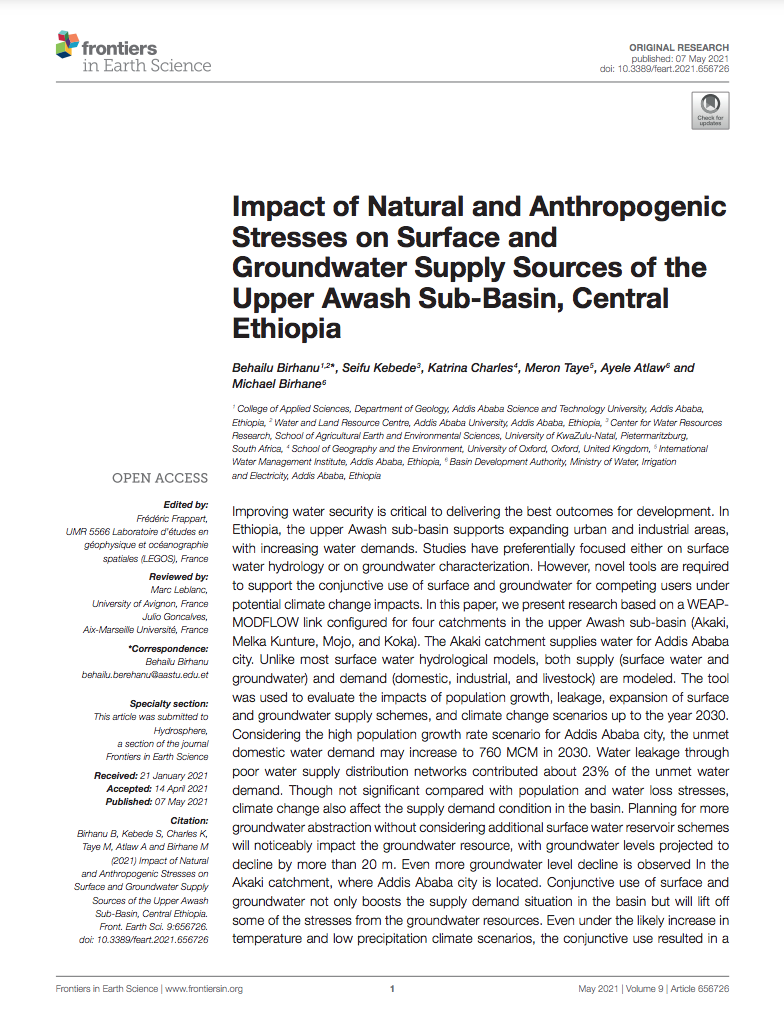Authors: Behailu Birhanu, Seifu Kebede, Katrina J. Charles, Meron Teferi, Ayele Atlaw, Michael Birhane
In Ethiopia, the upper Awash sub-basin supports expanding urban and industrial areas, with increasing water demands. Studies have preferentially focused either on surface water hydrology or on groundwater characterization. However, novel tools are required to support the conjunctive use of surface and groundwater for competing users under potential climate change impacts.
In this paper, the authors present research based on a WEAP/MODFLOW link configured model for four catchments in the upper Awash sub-basin. Unlike most surface water hydrological models, both supply (surface water and groundwater) and demand (domestic, industrial, and livestock) are modeled. The tool was used to evaluate the impacts of population growth, leakage, expansion of surface and groundwater supply schemes, and climate change scenarios up to the year 2030.

